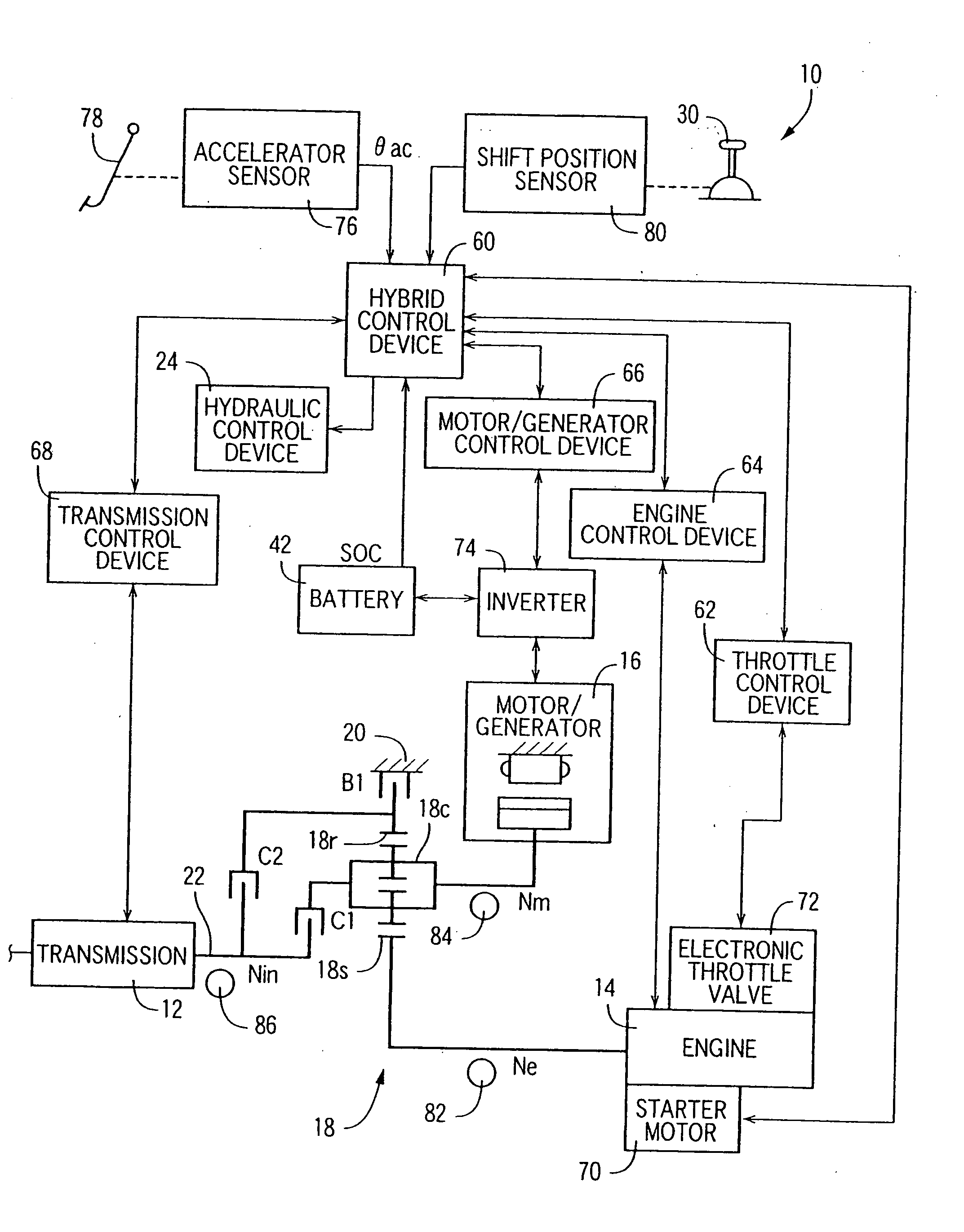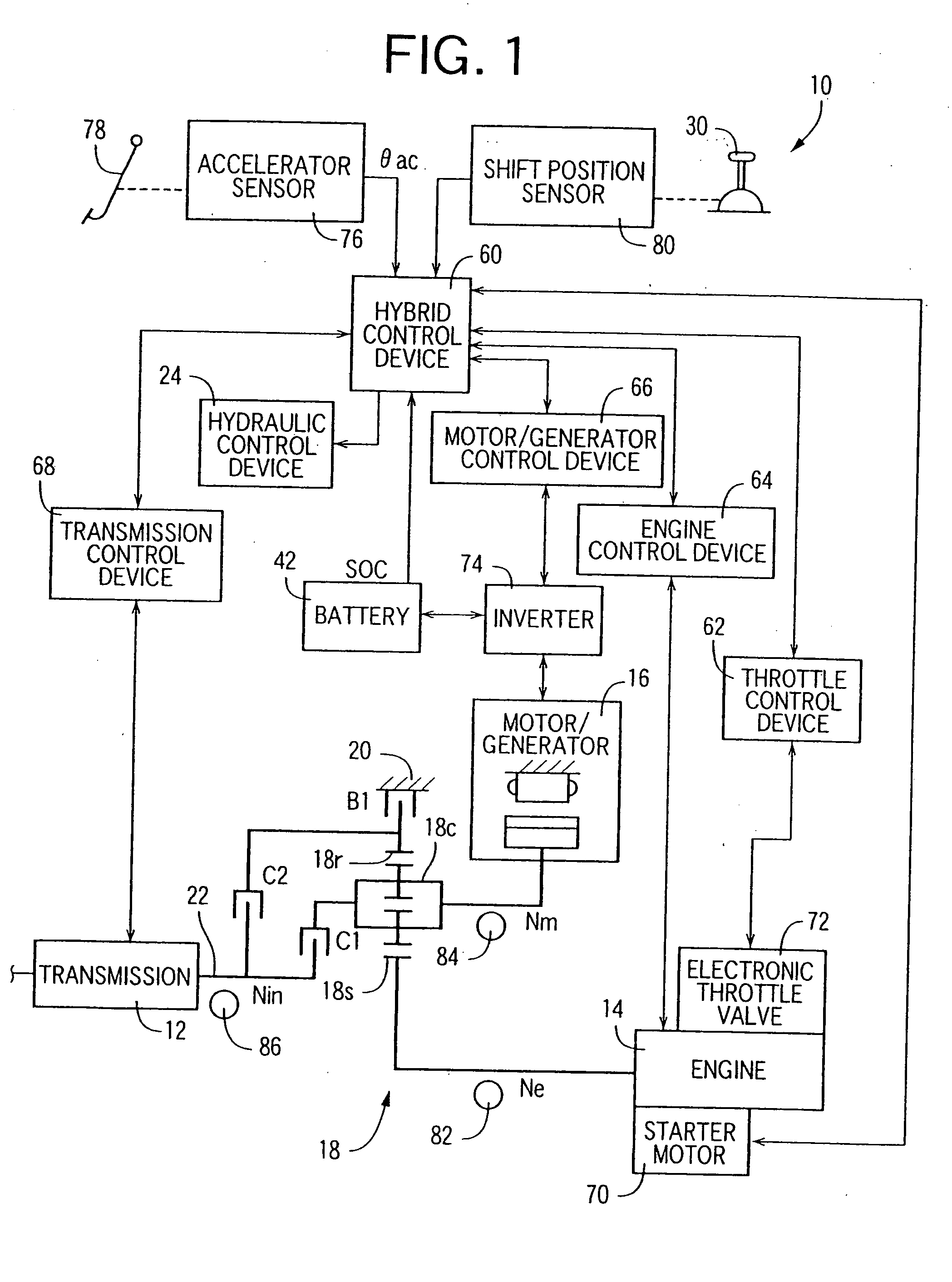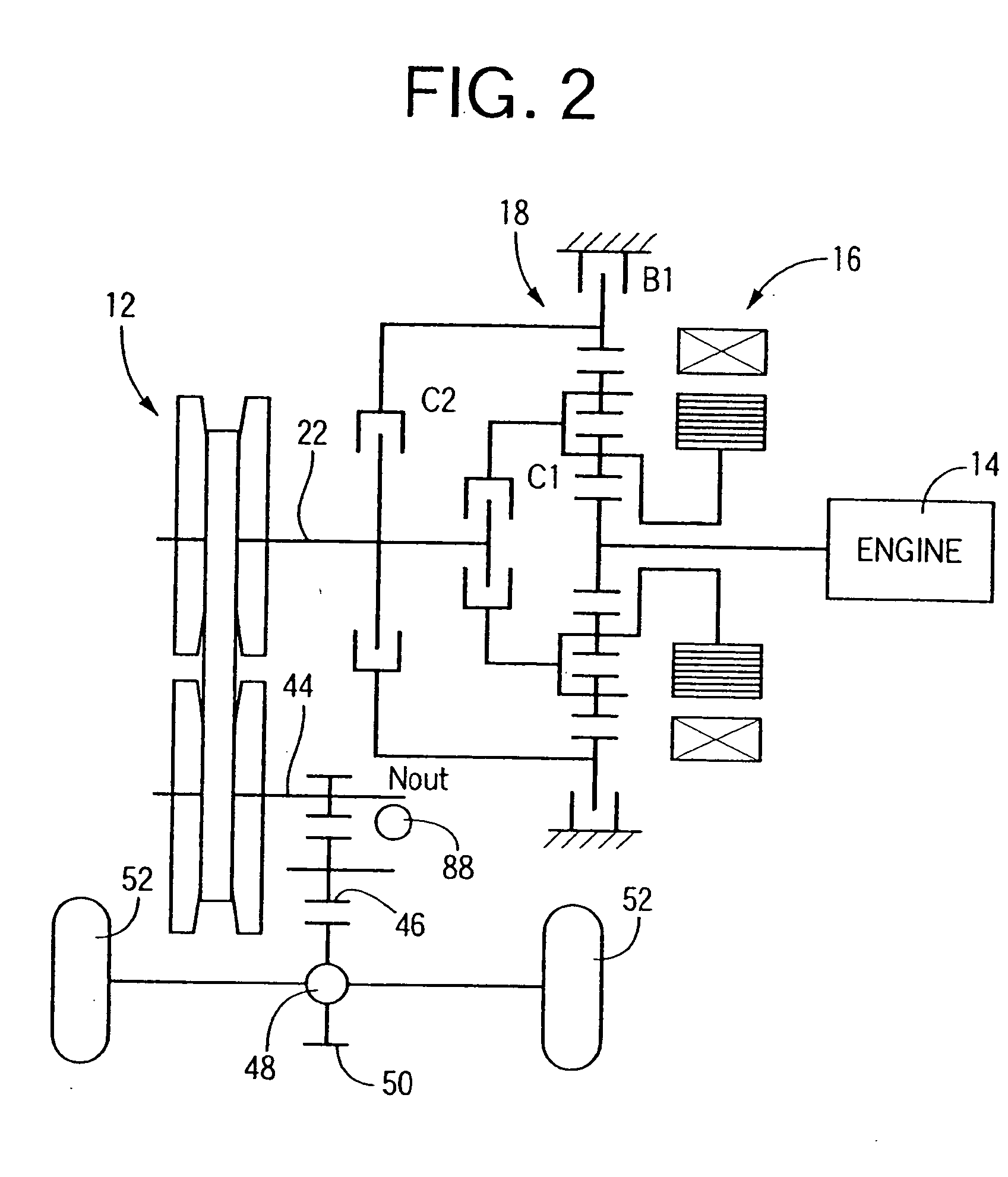Hybrid drive system wherein clutch is engaged when engine speed has exceeded motor speed upon switching from motor drive mode to engine drive mode
- Summary
- Abstract
- Description
- Claims
- Application Information
AI Technical Summary
Benefits of technology
Problems solved by technology
Method used
Image
Examples
first embodiment
[0110] It will be understood from the foregoing description of this invention illustrated in the flow chart of FIG. 7, that a portion of the hybrid control device 60 assigned to implement steps S1-3 and S1-6 constitutes second-clutch control means operable upon switching of the vehicle drive mode from the FORWARD MOTOR DRIVE mode to the DIRECT ENGINE DRIVE mode, for engaging the second clutch C2 only after the engine speed Ne has exceeded the motor speed Nm. It will also be understood that a portion of the hybrid control device 60 assigned to implement steps S1-2 constitutes first engine starting means for starting the engine 14 by cranking it by the starter motor 70, and that a portion of the hybrid control device 60 assigned to implement step S1-5 constitutes second engine starting means for starting the engine 14 by slipping engagement of the second clutch C2. It will further be understood that a portion of the hybrid control device 60 assigned to implement step S1-4 constitutes ...
second embodiment
[0111] Referring to the flow chart of FIG. 9, there is illustrated a mode transition control routine which is executed by the hybrid drive control device 60 according to this invention, when the vehicle drive mode is required to be switched from the FORWARD MOTOR DRIVE mode (established by the FORWARD-MOTOR-DRIVE control means 104) to the DIRECT ENGINE DRIVE mode (established by the DIRECT-ENGINE-DRIVE control means 102) or the ETC DRIVE mode (established by the ETC-DRIVE control means 100), upon depression of the accelerator pedal 30 in the FORWARD MOTOR DRIVE mode with the shift lever 30 placed in the operating position D or B. In this case, the DIRECT ENGINE DRIVE mode or the ETC DRIVE mode is established to use the engine 14 for driving the vehicle immediately after the vehicle has been started. The time chart of FIG. 10 indicates changes of the engine and motor speeds Ne, Nm and the operating amount θ ac of the accelerator pedal 78.
[0112] The mode transition control routine of ...
third embodiment
[0127] In the present third embodiment of FIG. 12, step S3-6 is implemented to determine whether the engine speed Ne is higher than the predetermined threshold, when the switching of the vehicle drive mode from the FORWARD MOTOR DRIVE mode (established by the FORWARD-MOTOR-DRIVE control means 104) to the forward engine drive mode (established by the FORWARD-ENGINE-DRIVE control means 112) is required. When the engine speed Ne is higher than the threshold, the engine 14 is started by merely controlling the fuel injection amount and other suitable parameters for starting of the engine 14, and without cranking of the engine 14 by the starter motor 70. This arrangement permits a rapid and smooth transition of the vehicle drive mode from the FORWARD MOTOR DRIVE mode to the forward engine drive mode upon depression of the accelerator pedal 78 immediately after the vehicle drive mode has been changed from the forward engine drive mode to the FORWARD MOTOR DRIVE mode, as indicated in FIG. 1...
PUM
 Login to View More
Login to View More Abstract
Description
Claims
Application Information
 Login to View More
Login to View More - R&D
- Intellectual Property
- Life Sciences
- Materials
- Tech Scout
- Unparalleled Data Quality
- Higher Quality Content
- 60% Fewer Hallucinations
Browse by: Latest US Patents, China's latest patents, Technical Efficacy Thesaurus, Application Domain, Technology Topic, Popular Technical Reports.
© 2025 PatSnap. All rights reserved.Legal|Privacy policy|Modern Slavery Act Transparency Statement|Sitemap|About US| Contact US: help@patsnap.com



